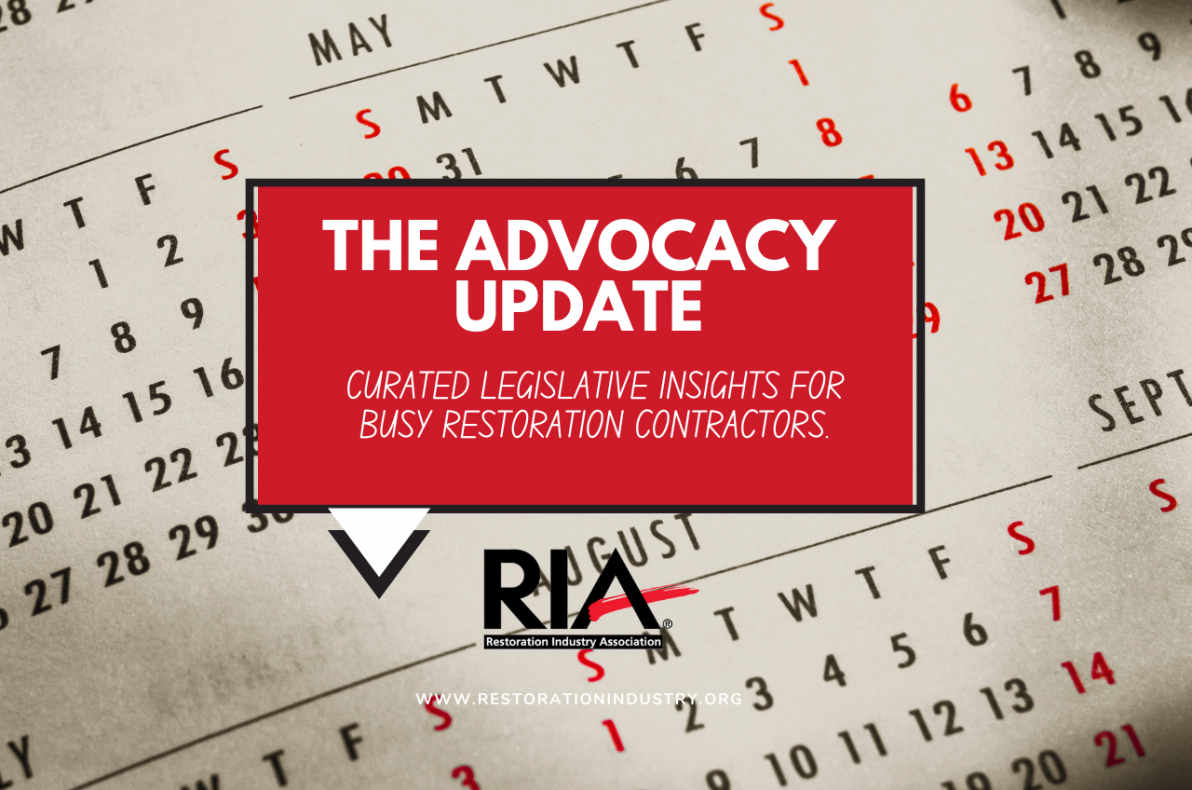Stay informed without the overwhelm. The Advocacy Update delivers clear, curated legislative updates restoration contractors can trust, highlighting the bills, policies, and issues that matter most to your business. Each week, get a quick, actionable overview to keep you prepared and ahead in a rapidly changing landscape.
July 30th, 2025
Disaster Response
Two significant bills this week relate to improving disaster response infrastructure, both at the state and federal levels.
- At the state level, TX HB 182 establishes the Texas Flash Flood Alley Interoperability Council and creates a grant program to improve emergency communications infrastructure across Central Texas, particularly in the Balcones Fault Zone—one of the most flood-prone regions in the United States. The council will be tasked with creating a statewide interoperability strategy and funding emergency communication upgrades for local governments. At the federal level, US S 2296, the National Defense Authorization Act for FY 2026, includes key provisions to support environmental remediation, infrastructure hardening, and storm recovery initiatives, especially in regions vulnerable to natural disasters. While defense-focused, it authorizes significant funding that can be leveraged by contractors engaged in federal disaster response and infrastructure restoration work.
- Impact/Context: These legislative efforts are especially timely in the wake of the catastrophic flooding in Central Texas. The immense death toll of this flood has been attributed to massive failures in emergency communication systems, with Kerr County officials failing to issue timely IPAWS alerts despite internal warnings from the National Weather Service. The result was delayed public notification, contributing to one of the deadliest flash floods in state history. These failures prompted widespread criticism and have fueled momentum for TX HB 182, which directly targets the communication gaps that worsened the disaster’s impact. In this context, the bill has strong bipartisan appeal, especially in flood-prone districts where local governments seek both resources and a unified emergency response framework.
- At the federal level, US S 2296 reflects growing recognition in Washington of the need for improved disaster readiness and environmental remediation capacity, particularly as extreme weather events become more frequent. The federal response to the Texas floods faced scrutiny after FEMA delays and bureaucratic hurdles left urban search-and-rescue teams stalled for more than 72 hours, despite a rapid disaster declaration. These breakdowns have heightened congressional interest in reforms and funding mechanisms to better support local and state restoration efforts. Restoration contractors with the ability to operate in federally declared disaster zones, and particularly those who work with FEMA, public utilities, or DoD installations, stand to benefit from increased opportunities linked to these legislative shifts.
Stay Connected & Support Advocacy
Follow us on social media to stay engaged with the latest updates and advocacy wins. Ready to get involved or support the mission? Email info@restorationindustry.org to learn how you can participate and support the RIA's advocacy efforts.
These weekly updates are part of RIA’s mission to educate, advocate, and elevate the restoration industry—empowering contractors to navigate legislative challenges and shape a stronger future for all.
JOIN RIA TODAY
|

